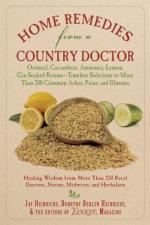|
This section contains 284 words (approx. 1 page at 300 words per page) |
Ammonia is a colorless gas composed of nitrogen and hydrogen with the formula NH3. It is the simplest stable compound formed from these two elements. Ammonia is one of the most widely used compounds in the United States, and serves as a raw material for the production of many important compounds. A large amount of ammonia is used as a fertilizer. Its boiling point is about -27.4°F (-33.3°C) making it easy to liquefy at low temperatures. For this reason it is commonly applied directly to the soil from portable tanks filled with the liquefied ammonia. Ammonia is also used to produce salts such as ammonium nitrate and ammonium phosphate for use as commercial fertilizers. It is used in the manufacture of nylon and rayon and for scouring cotton, wool, and silk. Although nitrogen makes up approximately 79% of the gas in the atmosphere, plants are not able to assimilate gaseous nitrogen unless it is converted to ammonia or some other form. An industrial method for synthesizing ammonia known as the Haber-Bosch process involves the combining of elemental hydrogen and elemental nitrogen in a reaction that requires the use of a catalyst, high pressure (100-1,000 atmospheres), and temperatures of 750- 1200° F (400-650°C). Biological nitrogen fixation, which forms ammonia from atmospheric nitrogen and hydrogen supplied by the organism, is also an important source of ammonia for plant growth. Both free-living and symbiotic bacteria are known to carry out this reductive fixation process. An especially important example involves Rhizobium bacteria in root nodules of leguminous plants, and is the basis for the common agricultural practice of growing legumes in rotation with other crops to enrich fields with available nitrogen.
|
This section contains 284 words (approx. 1 page at 300 words per page) |


